Whether you’re navigating a job transition, exploring a new industry or simply refining your professional brand, our expert career coaches are here to support you at MPI’s World Education Congress (WEC) Career Collective.
In advance of WEC—June 18-20 in St. Louis—we asked our coaches to weigh in on this question: “There’s a lot of volatility in the workforce right now. Any advice for someone currently interested in a job change?”
Next time, we’ll share their thoughts on how to know it’s the right time to change jobs.
_____________________________________________________________
Sue Calvery
Chief Recruiting Officer
CorpTalent LLC

First, ensure that your reasons for seeking a new role are clear—whether it’s for growth, better stability, to get away from bad leaders, etc. But also, you need to have clarity on what you want to do if you were to make a change. Do your research on potential employers to understand their financial health and stability—use Glassdoor, etc. Networking can also provide valuable insights into the company’s environment. Look at employees on LinkedIn to see if you have mutual connections you could reach out to and learn more about the company. Ultimately, trust your gut but back your decision with as much information as possible to navigate this uncertain landscape confidently.
_____________________________________________________________
Thomas Blasucci
Senior Director, People & Performance
Meeting Professionals International

In today’s job market, resilience and clarity are key. Volatility can make change feel risky, but it can also create opportunities. My advice is to get clear on your priorities (values, lifestyle, career goals) and focus your search on roles that align with them. Use informational interviews to stay grounded in current realities, and don’t underestimate the value of transferable skills. Flexibility, paired with a strong personal narrative, can go a long way.
_____________________________________________________________
Dawn Rasmussen - certified résumé writer, CMP
Chief Résumé Designer
Pathfinder Writing and Career Services

If you are interested in a job change, it is important to identify what types of skill sets and experience are needed for your next career target. Being proactive (and not relying on your employer to pay for it) and investing in yourself is a career-forward mindset where you are thinking ahead, identifying what skills you need to acquire and then moving forward with adding workshops, webinars, conferences, conventions, training programs or certifications that will build out your knowledge portfolio BEFORE you make a job change.
Another thing to keep in mind is that the axiom of how people find jobs through someone they know still rings true. This is a good time to ask yourself how your networking ground game is going. Are you building a robust network? Are you keeping in touch with that network? Are you using social media tools to build your profile visibility and engagement with target groups? Obviously, LinkedIn is the go-to resource for networking, but don’t forget those in-person events as well, like MPI’s WEC. Nothing replaces the value that true face-to-face meetings provide and the human-to-human connections that are forged.
Finally, the last thing to consider is to start looking for the types of companies for which you would like to work. Then lay the groundwork and networking inroads into those organizations so you are already a known quantity BEFORE a job opening actually becomes available.
_____________________________________________________________
Rachelle Stone, PCC, CPQC, TQ, PCC
Leadership Consultant, Executive Coach, Speaker
Founder & CEO, R Stone Consulting

Regardless of whether you are gainfully employed or not, whether you love your role or can’t stand it, everyone should manage their networks and stakeholders continuously. I can’t stress that enough. The second- and third-tier contacts in your network are essential to nurture. Maybe you only see them at a monthly meeting or encounter them once a year at a conference. Alternatively, they may work in a different department, and you sometimes collaborate with them. Send them a note, pick up the phone to say hello, get together for coffee and engage with their LinkedIn posts. These little actions are essential to ensure your network thrives and is there when needed. Your stakeholders include those who influence your career, your skip leader, internal and external mentors and people who speak your name when you’re not in the room.

